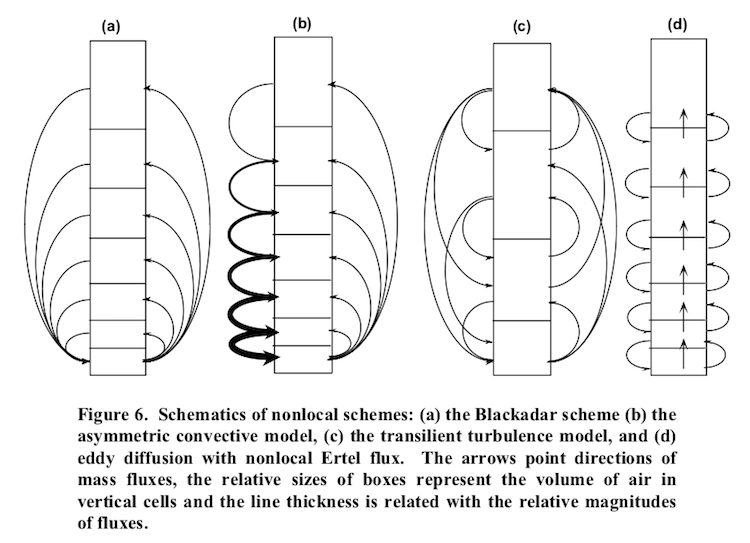Eulerian Dispersion Models Advanced

Reading Guide
Eulerian Models are typically described as models in which there is a fixed reference grid system and pollution concentrations are calculated at each time step and each point in the grid. They are different from Lagrangian models in which pollution elements (e.g., puffs or particles) are followed in time and space along their trajectories. Starting in the mid-1970s, the Eulerian or hybrid air quality models have been available for air pollution assessment studies and the acceptance has been strengthened by the need to include complex atmospheric processes such as chemical and photochemical reactions.
The US EPA has devoted significant efforts to developing Eulerian photochemical air quality models for the assessment of air pollution issues and evaluation of control strategies. The most common photochemical models are:
- The Community Multiscale Air Quality (CMAQ)
- The Comprehensive Air quality Model with extensions (CAMx)
- The Regional Modeling System for Aerosols and Deposition (REMSAD)
- The Urban Airshed Model Variable Grid (UAM-V®)
A chapter describing Eulerian models and in particular their treatment of atmospheric dispersion is included as pdf file.
Material
- Byun, D. et al. (2003) Eulerian Dispersion Models. Chapter 10 of AIR QUALITY MODELING - Theories, Methodologies, Computational Techniques, and Available Databases and Software. Vol. I - Fundamentals (P. Zannetti, Editor). Published by The EnviroComp Institute and the Air & Waste Management Association.
Guide prepared by P. Zannetti (9/2020). For corrections or expansions please contact us.